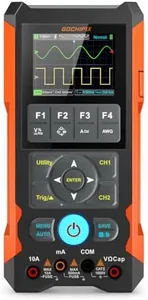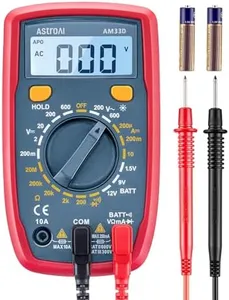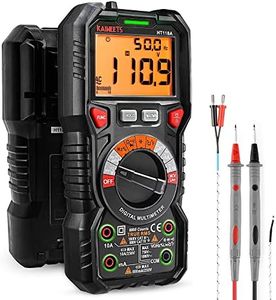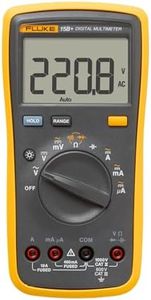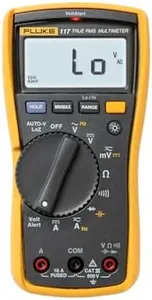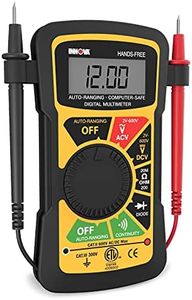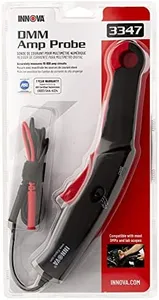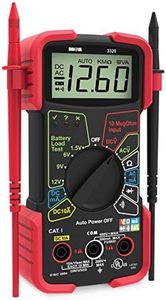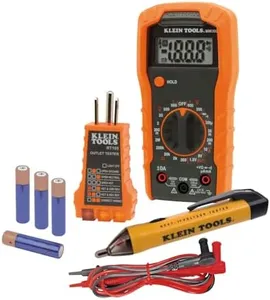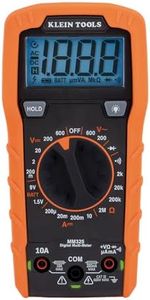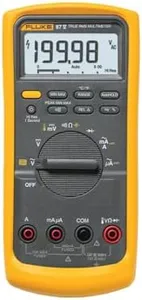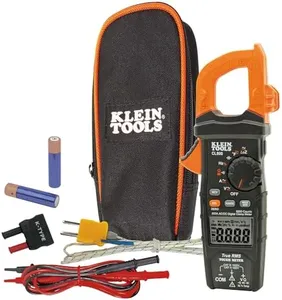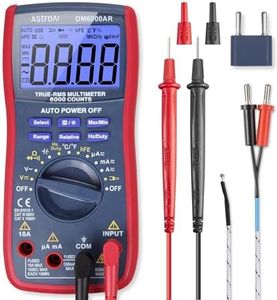We Use CookiesWe use cookies to enhance the security, performance,
functionality and for analytical and promotional activities. By continuing to browse this site you
are agreeing to our privacy policy
10 Best Digital Multimeters 2025 in the United States
How do we rank products for you?
Our technology thoroughly searches through the online shopping world, reviewing hundreds of sites. We then process and analyze this information, updating in real-time to bring you the latest top-rated products. This way, you always get the best and most current options available.

Our Top Picks
Buying Guide for the Best Digital Multimeters
Choosing the right digital multimeter (DMM) can be a bit overwhelming due to the variety of models and features available. A digital multimeter is an essential tool for anyone working with electrical circuits, whether you're a professional electrician, an electronics hobbyist, or a DIY enthusiast. The key to selecting the best DMM for your needs is understanding the specifications and how they relate to your specific requirements. Here are some important specs to consider when choosing a digital multimeter.AccuracyAccuracy refers to how close the measurements displayed by the multimeter are to the actual values. This is crucial because precise measurements are essential for diagnosing and troubleshooting electrical issues. Accuracy is usually expressed as a percentage. For general use, an accuracy of ±1% is often sufficient. For more critical applications, such as in a laboratory or for professional use, you might need a multimeter with an accuracy of ±0.1% or better. Consider what level of precision you need based on the tasks you will be performing.
ResolutionResolution is the smallest change in a measured quantity that a multimeter can detect. It is typically expressed in digits or counts. For example, a 3.5-digit multimeter can display readings from 0 to 1999. Higher resolution allows for more precise readings, which is important for detailed work. If you are working on high-precision electronics, a higher resolution multimeter (such as 4.5 digits or more) is beneficial. For basic electrical work, a lower resolution (3.5 digits) is usually adequate.
RangeRange refers to the span of values a multimeter can measure for a given parameter, such as voltage, current, or resistance. Some multimeters have auto-ranging capabilities, which means they can automatically select the appropriate range for the measurement. This feature is convenient and reduces the risk of incorrect readings. If you prefer manual control, ensure the multimeter covers the ranges you need. For example, if you work with both low and high voltages, make sure the multimeter can handle the full spectrum of your requirements.
Input ImpedanceInput impedance is the resistance the multimeter presents to the circuit being measured. High input impedance is important because it ensures that the multimeter does not significantly affect the circuit during measurement. Most modern digital multimeters have a high input impedance (typically 10 megaohms or more), which is suitable for most applications. If you are working with sensitive electronics, ensure the multimeter has a high input impedance to avoid loading the circuit.
Safety RatingsSafety ratings indicate the maximum voltage and category of circuits the multimeter can safely measure. These ratings are defined by standards such as CAT I, CAT II, CAT III, and CAT IV, with CAT IV being the highest level of protection. The higher the category, the more protection the multimeter offers against transient voltage spikes. Choose a multimeter with a safety rating appropriate for your work environment. For example, CAT III is suitable for most household and commercial electrical work, while CAT IV is necessary for industrial applications.
Additional FeaturesAdditional features can enhance the functionality and convenience of a multimeter. Common features include continuity testing, diode testing, temperature measurement, and data logging. Some multimeters also offer True RMS (Root Mean Square) measurement, which provides more accurate readings for AC signals. Consider which additional features are important for your specific tasks. For instance, if you frequently work with AC circuits, a True RMS multimeter is beneficial. If you need to measure temperature, look for a multimeter with a built-in thermometer.
FAQ
Most Popular Categories Right Now
